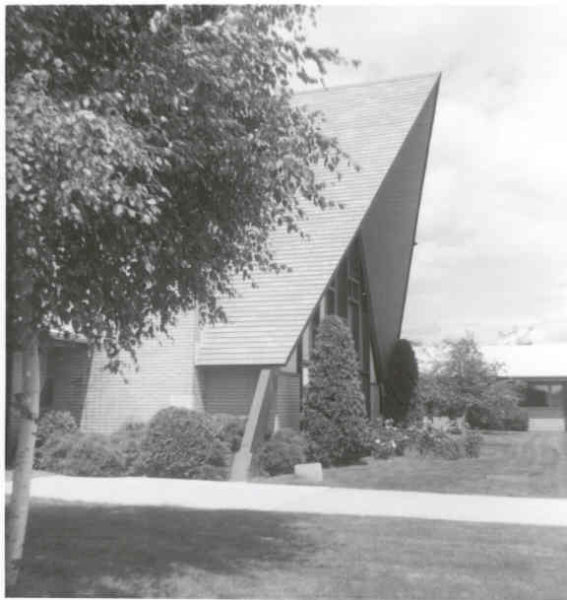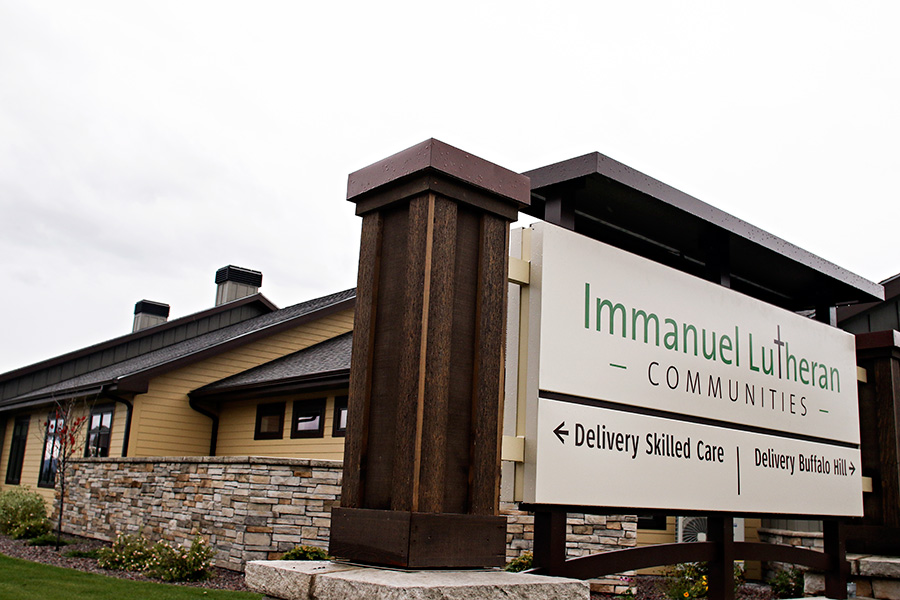For six decades, the message from Immanuel Lutheran Communities (ILC) in the Flathead Valley has been one of service, of understanding the community’s needs and trying to fulfill them in the most compassionate and human way possible.
From its roots as a simple nursing home and a safe, comfortable place for seniors to its current multi-million dollar expansions, ILC continues to grow as senior-living trends predict Montanans living longer in the future.
“Immanuel Lutheran started and has continued for 60 years to be responsive to our community’s needs,” said CEO Jason Cronk. “It really started with a group of men and women who recognized that they need a comfortable place for the seniors to live.”
That realization in 1953 started a campaign to raise money, one that took fundraisers to Lutheran churches across the state for seed capital in order to build a nursing home. That dream came to fruition in 1957, when the nursing home opened.
But the forward-thinking board saw the need for more services, Cronk said. Memory care began in 1976, with the opening of the Bratsburg Memory Wing of the existing nursing home after a group of motivated men and women saw the need to help their elders who seemed to be suffering from memory issues.
Though commonplace now, memory care back then was revolutionary.
“We opened one of the first in the country in little old Kalispell,” Cronk said. “We opened a wing dedicated to people with Alzheimer’s and some form of dementia.”

In the 1980s, an eye on the community’s needs and a desire to stay competitive identified a growing group of seniors who could live on their own, but wanted to be in a community. So in 1988, Immanuel Lutheran built 100 apartments for independent living in a community setting, another revolutionary idea at the time, in what became Buffalo Hill Terrace.
Once the Terrace filled up, Immanuel Lutheran began providing a more intensive version of independent living with assisted living services, obtaining its first license to do so in 2000. Cronk noted that because there are both independent and assisted living at Buffalo Hill Terrace, residents who need to transition can do so smoothly and easily.
In 2012, ILC opened The Retreat, which allows residents who have been through an acute procedure or issue to stay for a short time before heading home.
“That was more forward-thinking, recognizing there was a need for this, that these types of people didn’t need long-term care, they just needed an average of 28 days,” Cronk said. “We call them guests. It’s much more of a hospitality type of service. They all come in broken and they all go home happy.”
The ILC board won’t rest on its laurels, Cronk said. The nursing home created 60 years ago has outlived its mechanical, electrical and plumbing lines, which need to be updated. This launched a multi-phase campaign to reposition the ILC campus in order to more effectively serve the community, he said.
ILC expanded The Retreat from 16 rooms to 48 rooms in March and added memory care in the form of The Lodge, its newest Alzheimer’s unit, which opened at the end of June with 24 units. Already, 20 are filled.
Other improvements include an expanded kitchen and dining rooms, a new covered entrance and lobby for Buffalo Hill Terrace, and a new dining destination, called the Wooden Nickel Coffee Bar and Lounge.
In spring, Phases 2 and 3 will begin full bore, with 36 new independent living residences on top of under-building parking. This will all be connected to an indoor pool, Jacuzzi area, a new auditorium, and a chapel. So far, 34 deposits have been placed on those 36 units.
“It’s really been well-received,” Cronk said. “We’re pleased with the progress; it’s really moving forward as planned.”
Phase 3 will include updating the next wing of the nursing home to create a whole new environment that feels less institutional and more community-oriented. Cronk said about 60 percent of the nursing home residents can’t care for themselves and also have little money to pay for the services at ILC.
“That’s a real part of our ministry, is serving that component of our society that doesn’t have any money and can’t care for themselves,” Cronk said. “We’re creating a home where you don’t know who is on Medicaid. Everyone is treated the same.”
Cronk said the ILC would continue to look at community needs in the future, as will be necessary with the expected increases in the senior populations. Montanans continue to live longer, increasing the need for services such as those at ILC. According to the 2010 Census, Montana had 175 centenarians living here, and that number is expected to increase to 3,000 by 2025. Projections also show more than a quarter of the state’s population to be seniors by 2030.
“That’s what’s been behind the organization, is continually looking at what the needs are of the community and responding in an ever-changing environment and an aging Flathead Valley,” Cronk said.
For more information on Immanuel Lutheran Communities, visit www.ilcorp.org.
